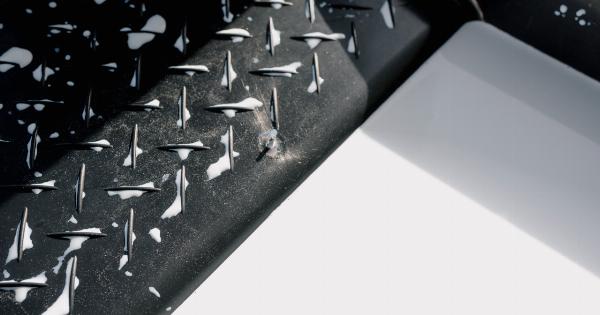Babies have delicate and developing heads that require special care. It is important to use the right type of pillows, mattresses, and bedding that can provide sufficient and safe support.
However, some parents and caregivers may not realize the potential harm that certain products can cause to their infants’ head shape and development. One such product is the cranial deformation pillow, which claims to prevent or treat conditions like plagiocephaly or flat head syndrome.
In this article, we will explore what cranial deformation pillows are, how they work, and why you should avoid using them for your baby.
What are Cranial Deformation Pillows?
Cranial deformation pillows are special pillows designed to support an infant’s head shape and prevent or correct flattening or misshaping of their skull.
These pillows usually have a concave center and raised edges that are meant to distribute the pressure evenly across the baby’s head. They may come in various shapes and sizes, and some may also have built-in headrests or neck supports.
Proponents of cranial deformation pillows claim that they can help improve an infant’s head shape and prevent the need for corrective measures like helmet therapy or surgery.
They argue that babies are prone to developing flat spots on their heads due to prolonged pressure on certain areas when lying down, particularly if they have a preference for sleeping on one side or have other risk factors such as premature birth, tight neck muscles, or torticollis.
How do Cranial Deformation Pillows Work?
The theory behind cranial deformation pillows is that they can provide a more neutral and evenly distributed support for an infant’s head, thus reducing the pressure on any one spot.
By doing so, they can help the head shape to round out and prevent flat spots from forming or worsening. Some pillows also claim to prevent or treat a condition called positional plagiocephaly, which refers to an asymmetrical or oblique flattening of the head due to a persistent head position.
However, the effectiveness of cranial deformation pillows is not supported by scientific evidence.
While some studies have shown that certain shapes or materials of pillows may be associated with a lower risk of head flattening, there is no conclusive proof that using a cranial deformation pillow can prevent or treat flat head syndrome or improve the overall head shape. Moreover, the use of such pillows may actually pose a risk to an infant’s health and development.
Why Should You Avoid Cranial Deformation Pillows for Infants?
There are several reasons why parents and caregivers should avoid using cranial deformation pillows for infants:.
1. They can increase the risk of Sudden Infant Death Syndrome (SIDS).
The American Academy of Pediatrics (AAP) recommends that infants be placed on their back to sleep on a firm, flat surface, free of any soft bedding, pillows, or toys.
This is because soft objects can pose a suffocation hazard and increase the risk of SIDS, especially if the baby is unable to move their head away from the object or if their breathing is obstructed. Using a cranial deformation pillow can therefore create a potential danger for an infant, as it adds to the softness and height of the sleep surface.
2. They can cause neck strain or discomfort.
Infants have weak neck muscles that are still developing, and using a pillow that elevates their head too much or in an unnatural position can strain their neck and cause discomfort.
Moreover, some infants may move around during sleep and end up with their face pressed against the pillow, which can affect their breathing or prevent them from turning their head to clear their airway.
3. They may not be effective or necessary.
As mentioned earlier, there is no reliable evidence that cranial deformation pillows can prevent or treat flat head syndrome or improve head shape.
In fact, most cases of flat head syndrome resolve on their own over time or with some simple interventions like tummy time and repositioning. Helmet therapy, which involves wearing a custom-fitted helmet to reshape the head, is also a safe and effective option for severe cases, but should only be prescribed by a qualified healthcare provider.
4. They can delay the diagnosis and treatment of underlying conditions.
Using a cranial deformation pillow as a substitute for addressing other factors that may contribute to flat head syndrome, such as torticollis or muscle tightness, can delay the diagnosis and treatment of these conditions.
Infants with torticollis, for instance, may benefit from physical therapy or stretching exercises that can help improve neck range of motion and reduce the risk of head flattening. Ignoring or masking these issues with a pillow can lead to further complications and a delay in seeking appropriate care.
What are the Alternatives to Cranial Deformation Pillows?
If you are concerned about your baby’s head shape or want to prevent flat head syndrome, there are safer and more effective ways to do so:.
1. Practice tummy time.
Tummy time is when you place your baby on their stomach while awake and supervised. This helps to strengthen their neck, back, and shoulder muscles, as well as give them a chance to explore their environment from a different perspective.
Aim for a few minutes of tummy time several times a day, and gradually increase the duration as your baby grows stronger.
2. Vary your baby’s head position during sleep.
Changing the position of your baby’s head during sleep can help distribute pressure evenly and prevent flat spots from forming.
You can try alternating the direction that your baby faces, or using a wedge or rolled towel to elevate one side of the mattress slightly. However, avoid putting any objects under or around your baby’s head, as this can pose a suffocation risk.
3. Give your baby frequent breaks from lying down.
Infants should not spend extended periods of time lying down, as this can increase the risk of developing flat spots or other health problems.
Make sure to hold and carry your baby frequently, provide plenty of supervised playtime on a safe surface, and use a baby carrier or sling for hands-free cuddling.
4. Address any underlying conditions that may contribute to flat head syndrome.
If your baby has torticollis or other muscle or skeletal issues that affect their head position or shape, seek medical advice and treatment as soon as possible.
Your healthcare provider can recommend appropriate interventions, such as physical therapy or special exercises, that can help improve your baby’s condition and prevent complications.
Conclusion
Cranial deformation pillows are products that claim to prevent or treat flat head syndrome in infants, but they are not supported by scientific evidence and can pose a risk to the baby’s health and development.
Parents and caregivers should avoid using them and instead focus on safe and effective ways to promote their baby’s head shape and development, such as tummy time, varied head positions during sleep, frequent breaks from lying down, and addressing underlying conditions. If you have concerns or questions about your baby’s head shape or health, talk to your healthcare provider or a qualified healthcare professional.






























